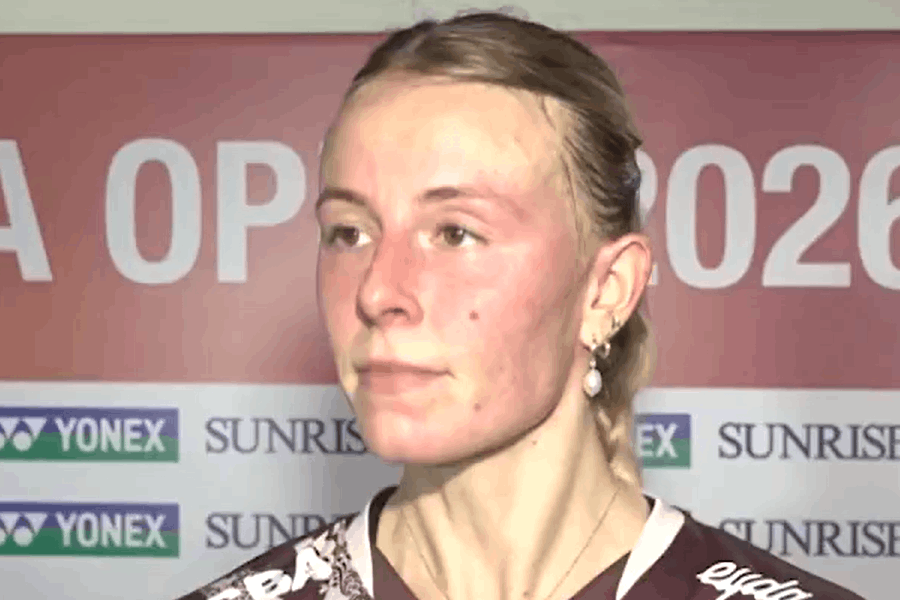The maximalist dream of the so-called INDIA alliance, involving the complete seat coordination of all parties opposed to the Bharatiya Janata Party, was never likely to be a reality in West Bengal. In this state, where the BJP has traditionally never had much of a foothold, it was always impossible to conceive of any electoral alliance that involved the ruling All India Trinamul Congress and its age-old adversary, the Communist Party of India (Marxist). Even so, the beleaguered liberal ecosystem centred on the national capital had always hoped that an understanding of sorts involving Rahul Gandhi, M.K. Stalin in Tamil Nadu and Mamata Banerjee would have a symbolic importance in a general election in which Prime Minister Narendra Modi is threatening to run away with all the prizes.
Last Sunday, at yet one more of those stupendously large public meetings for which West Bengal is famous, the mercurial AITC supremo snuffed the life out of the INDIA alliance in a very dramatic way. She announced the names of AITC candidates from all the 42 Lok Sabha seats of West Bengal, including the two seats held by the Congress. On its part, the Congress uttered a feeble protest against Mamata Banerjee’s ‘unilateral’ declaration but it could not conceal the fact that the oh-so-clever alliance, whose naamkaran was said to be the handiwork of the Bengali poet-politician, was now dead, publicly strangled before lakhs of witnesses in Calcutta.
Whether the oozing self-confidence of the chief minister and her nephew is warranted will be known once the results of the election are out. However, judging from the speeches of the Banerjee duo at the meeting, some conclusions are warranted. First, in resurrecting her 2021 assembly poll plank of being the party of Bengal against outsiders, the AITC made it sufficiently clear that it was fighting the general election to hold on to a regional space. Secondly, the AITC’s shrill insistence that the Modi government at the Centre had short-changed West Bengal in welfare payments was at one with the protest politics that had been a feature of Left politics in the state from 1977 to 2011. Mamata Banerjee’s indictment of a venal imperial power in Delhi was a melodramatic carbon copy of the gripes associated with Jyoti Basu and past generations of venerable bhadralok Marxists.
Decoding the speeches of the AITC top guns is no rocket science. The underlying assertion that the mantle of Swami Vivekananda, Ishwar Chandra Vidyasagar, Raja Rammohan Roy and Rabindranath Tagore had fallen on the Banerjee family of Kalighat could well be inspirational. It could also bolster the younger Banerjee’s claim that each of the 42 AITC candidates represent Bengal, no less. However, since the electoral battle ahead is for the control of the Government of India in its entirety, it can safely be assumed that Mamata Banerjee has quite pragmatically concluded that her battle is for a small share of the Opposition space. If she believed — as she did in 2019 when she brought all the anti-BJP stalwarts to the same venue in Calcutta for a show of people’s power — that the AITC is a claimant for a share of political power in Delhi, last Sunday’s rhetoric would have been markedly different. It would certainly not have included a tirade against ‘outsiders’.
When confronted with difficult situations, it is the job of clever politicians to seek innovative solutions. This is challenging in the realm of electoral politics where the persuasion of people matters. As the country approaches the general election, the AITC leadership is painfully aware that the overall situation does not favour the likelihood of the BJP-led National Democratic Alliance being defeated. The most optimistic scenario presented by strategists in the Opposition camp is that Modi falls short of the BJP’s gung-ho 400-seat prediction. This would count as its moral victory. The belief that the NDA will fall short of a simple majority — this was the wishful thinking of the media in 2014 — is, as of now, not being seen as a possibility. In other words, the challenge before Mamata Banerjee and her party is to make the best of a difficult situation.
In trying to insulate West Bengal from the Modi winds which are apparently blowing across India, she is essentially shoring up her defences in readiness for what she sees is her more important battle: the state assembly election of 2026.
For Modi and the BJP, clipping the wings of Mamata Banerjee is an important facet of the 2024 general election campaign. In the past five years, the BJP in West Bengal has moved from being a fringe player to becoming the main Opposition party, one that (exit polls suggest) commands the support of more than half the Hindu voters of the state. Since national parties traditionally secure an incremental vote in parliamentary elections, the Union home minister, Amit Shah, has set an exacting target of 35 of the state’s 42 seats for the local unit.
For the BJP, the battle in West Bengal is a little different from its encounters in northern and western India. Having been governed by regional parties without any toehold at the Centre since 1977, the political mentality in the state is markedly regional. This is also a consequence of the fact that the rapid economic development and the dramatic infrastructural upgradation that India has witnessed since 2014 have not been fully experienced in Bengal. In political terms, this has meant that the state BJP has operated — both successfully and unsuccessfully — within a regional idiom.
The temptation of the local BJP to fight the Lok Sabha election as a dress rehearsal of the 2026 assembly election is often irresistible. In his visits to the state, the prime minister may combine his outrage over corruption and Sandeshkhali with his larger Viksit Bharat message, invoking the dreams of the younger generation. However, when transmitted into the political messaging of local leaders, the election is often projected as a local battle against the AITC rather than as a national endeavour to take India to the next stage of development. Likewise, the Citizenship (Amendment) Act is often seen as an issue affecting the Matua and Namasudra communities.
Politics is not science and politicians don’t have a reservoir of tested formulae. Mamata Banerjee believes that her most effective strategy against the BJP is to localise the election, consolidate the Muslim vote, and divert attention from the AITC’s national irrelevance. Logically, the BJP’s thrust should be national and principally focussed on the Modi guarantees. The misrule of Mamata Banerjee could be the secondary string. In practice, however, it has been the other way round.










